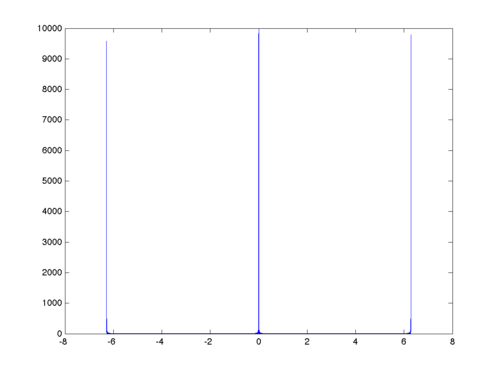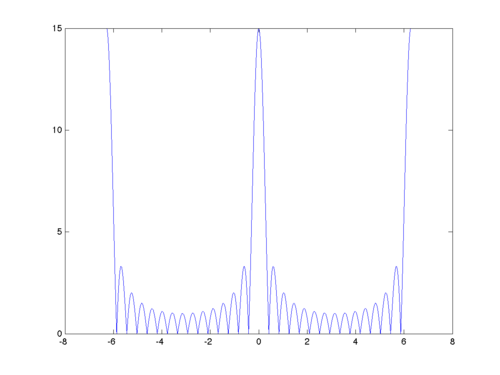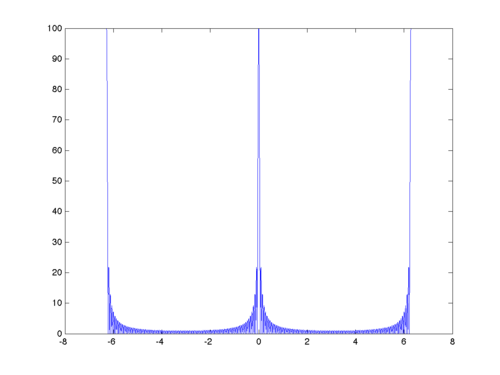| Line 5: | Line 5: | ||
This is the graph of the magniture of <math>W(\omega)</math> for <math>N=15</math>. | This is the graph of the magniture of <math>W(\omega)</math> for <math>N=15</math>. | ||
| − | [[Image:W_of_omega_N_equal_15.png]] | + | [[Image:W_of_omega_N_equal_15.png|500px]] |
This is the graph of the magniture of <math>W(\omega)</math> for <math>N=100</math>. | This is the graph of the magniture of <math>W(\omega)</math> for <math>N=100</math>. | ||
| − | [[Image:W_of_omega_N_equal_100.png]] | + | [[Image:W_of_omega_N_equal_100.png|500px]] |
This is the graph of the magniture of <math>W(\omega)</math> for <math>N=10000</math>. | This is the graph of the magniture of <math>W(\omega)</math> for <math>N=10000</math>. | ||
| − | [[Image:W_of_omega_N_equal_10000.png]] | + | [[Image:W_of_omega_N_equal_10000.png|500px]] |
Revision as of 10:14, 23 September 2009
ECE 438 Fall_2009 Prof. Boutin: some graphs to illustrate DFT lecture
This is the graph of the magniture of $ W(\omega) $ for $ N=15 $.
This is the graph of the magniture of $ W(\omega) $ for $ N=100 $.
This is the graph of the magniture of $ W(\omega) $ for $ N=10000 $.




